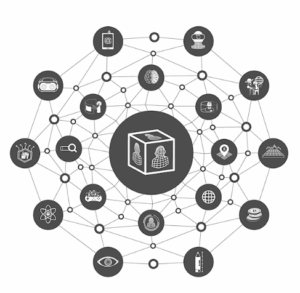We look at the smart systems that let digital records be shared and keep accurate without a central supervisor. These systems are especially important in blockchain technology. These systems are what keep decentralized networks alive. They make sure that everyone agrees on what the record appears to be right now, and maintains the whole system safe from anybody who want to do harm. We want to explain how these varied complicated regulations function and why they are so vital for developing trust and opening up new digital opportunities.
How Decentralized Systems Reach Consensus and Stay Safe
Getting Everyone on the Same Page in a Distributed World
There are now other ways to establish consensus, and each has its own pros and cons when it comes to keeping things safe, handling a lot of activity, and being really decentralized.
Proof of Work (PoW): Competing with Computing Power
Proof of Work is one of the first and most well-known ways to do things. Bitcoin is one of the most prominent examples. People who take part in this system, called “miners,” race to solve a hard arithmetic problem with powerful computers. The first miner to get the right answer gets to add the next group of approved transactions to the blockchain and gets a reward. Because of all the “work” or processing power that goes into it, it’s exceedingly expensive and hard to change the blockchain’s past. A dishonest person would require more computing power than everyone else put together. Proof of Work is quite safe, but it requires a lot of energy.
Proof of Stake (PoS): Security Through Investing Money
Proof of Stake seemed like a better choice because it used less energy. With Proof of Stake, people who want to generate new blocks are picked based on how much of the network’s own digital money they are ready to “stake.” These people are called “validators.” This method encourages people to be honest by giving them money, plus it consumes a lot less energy than Proof of Work, which is better for the environment.

The Changing Consensus Landscape: Beyond PoW and PoS
The area of consensus mechanisms is always changing, with new algorithms being made to make them work better and for certain situations.
Delegated Proof-of-Stake (DPoS) and Its Other Forms
Delegated Proof-of-Stake (DPoS) is a type of PoS in which token holders vote on a small number of “delegates” or “witnesses.” These people are then in charge of checking transactions and making blocks. This could speed up transactions and make the system easier to scale, but it might additionally render it simpler to manage because fewer people are in charge of reaching agreement.
Practical Byzantine Fault Tolerance (pBFT) and Other
Practical Byzantine Fault Tolerance (pBFT) and other similar systems are typically employed in permissioned or business blockchains when the people involved are known and trust each other to some extent. pBFT lets a small, fixed group of validators swiftly agree on something, even if some of them are bad or broken. pBFT isn’t as decentralized as PoW or PoS, but it has a lot of throughput and low latency, which makes it good for some industrial uses. Proof-of-Authority (PoA), Proof-of-History (PoH), and Proof-of-Burn are some other new ways to get distributed consensus. Each one has its own way of doing things.
Final Thoughts
We at “Consensus Mechanisms” know that these fundamental algorithms are the unsung heroes of decentralized technology. They turn difficult problems of trust and agreement into strong, verifiable solutions that open the door to new uses outside traditional banking. Consensus mechanisms are not only protecting today’s digital assets, but they are also designing the architecture of a more open, efficient, and connected digital future for everyone. This will make it possible for people to interact with each other in a trustless environment.
Download our whitepaper to discover real-world blockchain applications